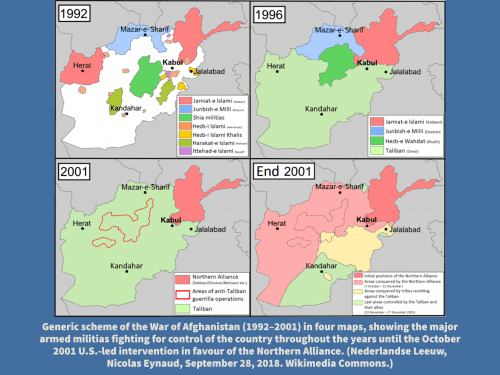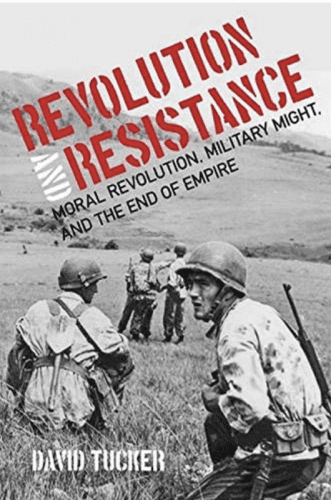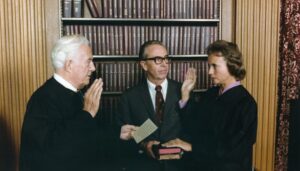The Fall of Kabul
 Why did Kabul fall, and fall so quickly, to the Taliban? The simple answer is that you cannot beat something with nothing. Let’s set aside for another occasion the question of why the Taliban was something and consider why the Afghan Army and government turned out to be nothing. Considering this question will not help the Afghans, nor will it ease the anguish of the thousands of Americans who fought or who lost loved ones in this long war. It will, however, tell us something about America and how it moves across the world’s stage.
Why did Kabul fall, and fall so quickly, to the Taliban? The simple answer is that you cannot beat something with nothing. Let’s set aside for another occasion the question of why the Taliban was something and consider why the Afghan Army and government turned out to be nothing. Considering this question will not help the Afghans, nor will it ease the anguish of the thousands of Americans who fought or who lost loved ones in this long war. It will, however, tell us something about America and how it moves across the world’s stage.
The Afghan Army and government were a mirage that evaporated at the approach of the Taliban because the United States imposed on Afghanistan the outward forms of a modern nation state—elections, a president, a national assembly, a national army, government ministries—even though Afghanistan was not a nation and had never been a state. Afghanistan is not one nation, but a collection of nations or geographically-based ethnic groups. Seldom, if ever, had any government controlled the territory of Afghanistan by maintaining a monopoly on the legitimate use of force, to use one common definition of a state. (After its original conquest in the 1990s, the Taliban controlled about three quarters of the country and faced armed opposition in the remaining quarter.)

Given this reality, why did the United States try in Afghanistan to create a nation state from nothing? Two reasons: our principles, and over-confidence in our ability to apply them to the world.
The United States takes its existence from a universal principle, “all men are created equal.” This implies that individuals must consent to the establishment of government, if it is to be legitimate. They do so, however, as equal individuals, not as members of ethnic groups. Human equality as a fundamental political principle implies therefore that all legitimate political organizations are nations, and that the nation creates a state in “order to form a more perfect union, establish justice, insure domestic tranquility, provide for the common defense, promote the general welfare, and secure the blessings of liberty to ourselves and our posterity,” as the preamble of the Constitution puts it. Our fundamental political principle leads us to impose the nation state wherever our influence reaches. Who would want to impose an illegitimate form of government?
In fact, in our history many of our most distinguished statesmen (Thomas Jefferson and John Quincy Adams, for example) were willing to support less than legitimate governments overseas. If nation states presuppose the moral and political pre-eminence of individuals, then they will not be possible in places where ethnic identity is more important than individualism. In such cases, for as long as necessary, illegitimate government may be the best that is possible. The correct policy in these cases is, whenever possible, to encourage benign rule and efforts to prepare the way for legitimate government.
In Afghanistan, the United States did not pursue this correct policy, a policy that shows a prudent regard for the variability and recalcitrance of the world. It did not do so for the second reason mentioned above: an over-confidence in our ability to control the world. To a large degree, America did not begin dealing systematically with the rest of the world until World War II and the Cold War. Almost all of our foreign policy ideas and institutions either came into existence or were changed fundamentally during these years. A key idea in these formative years was “modernization,” an academic theory that, in brief, took the United States as the prototype of the modern democratic nation state. It held that all of those countries—mere territories on a map really—emerging from the destruction of the old European empires, which the United States insisted on as a war aim, would sooner or later necessarily develop into something like the United States. Correct policy was to encourage this development. According to the theory, developing a modern national army was an important part of this policy. It would help strengthen the sense of nationhood by bringing people from different parts of the territory together and by carrying out various projects of social and economic improvement and development. When it could, therefore, the United States set out to replicate its military in these supposedly emerging nation states. Modernization as a theory soon fell out of favor in academia, but for want of something better it remains an unacknowledged cause of America’s actions around the world. It helps explain what we did in Afghanistan.
Afghanistan shows again the failure of an approach to the world that relies on supposed laws of historical development and our ability to manipulate or control the world. More specifically, it shows that a national army does not promote nationhood or build a nation state. Rather, in the absence of a nation and a state—functioning institutions that can pay and supply soldiers—a national army is a mere shadow. “We didn’t receive any help from the central government, and so the district fell without any fighting,” an Afghan soldier told a reporter.
 The older prudent approach to a problem like Afghanistan would have acknowledged the limitations on what could be done. It might have settled on giving money to regional warlords to encourage them to maintain order. The older approach would have left unsaid, at least in public, that “maintaining order” was a euphemism for paying the warlords to help our friends and kill our enemies. It would have consoled itself with the thought that sometimes in this world helping friends and killing enemies is as close to justice as one is likely to come.
The older prudent approach to a problem like Afghanistan would have acknowledged the limitations on what could be done. It might have settled on giving money to regional warlords to encourage them to maintain order. The older approach would have left unsaid, at least in public, that “maintaining order” was a euphemism for paying the warlords to help our friends and kill our enemies. It would have consoled itself with the thought that sometimes in this world helping friends and killing enemies is as close to justice as one is likely to come.



